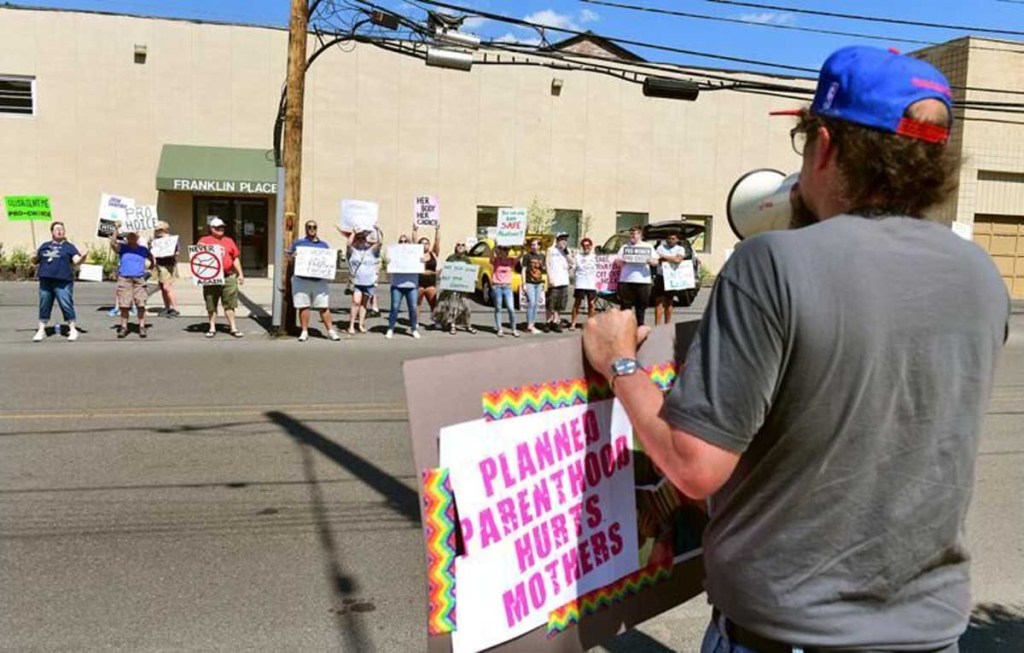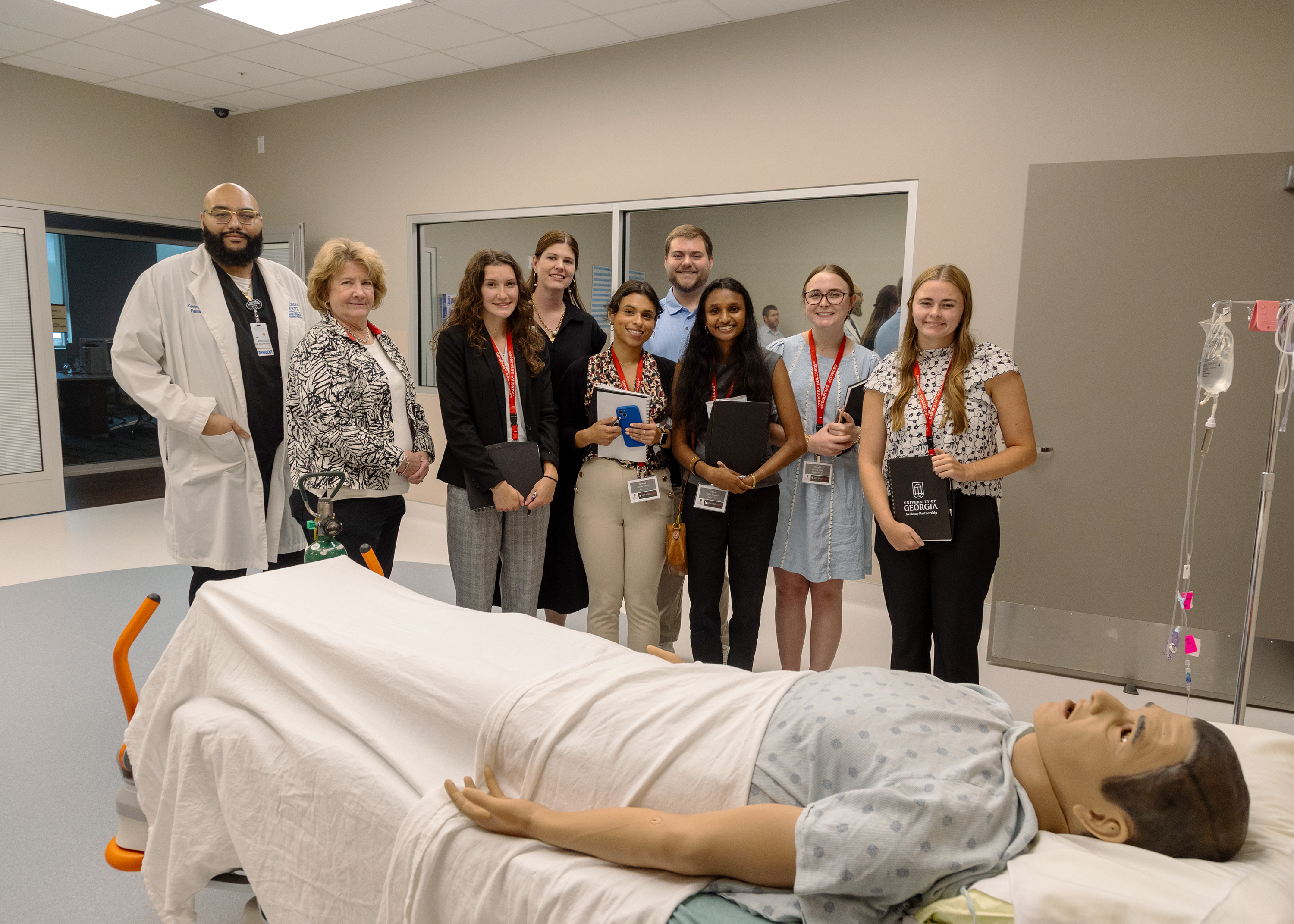States waste no time setting their own abortion laws after Roe reversal
Published 1:10 pm Wednesday, August 17, 2022

- Tom Venditti joins anti-abortion protesters as he uses a megaphone to talk to abortion rights supporters across the street during a rally on June 30 in Johnstown, Pennsylvania. CNHI | Thomas Slusser
Gayla Regan was a 17-year-old high school student when she found out she was pregnant with her boyfriend’s child and decided to terminate her pregnancy.
“It impacted my life greatly,” said Regan, of Westmont, Pennsylvania. “I could not have gotten my education. I could not have found stable employment. There are many benefits to not having a child. I was a child. I was running around doing 17-year-old stuff. I could not have been a good parent.”
Regan said for years she was ashamed, but now says she believes there should not be any shame in what a pregnant person does with their own body.
She says she wept in June when the U.S. Supreme Court overturned Roe v. Wade, a nearly 50-year-old ruling that had legalized the right to abortion across the country, shifting power to state legislatures to set abortion access laws.
In the two months since that landmark ruling, a patchwork system of abortion access has emerged that medical providers and abortion rights advocates say has created an unequal playing field for pregnant people, where ZIP codes and income levels often determine access to services or even life-saving treatments.
Lawmakers in eight states — including Oklahoma, Missouri, Arkansas, Alabama, Kentucky and Mississippi — have banned all abortions, except to save the life of the mother, according to the Center for Reproductive Rights.
Legislators in roughly 10 others — including Illinois, Minnesota, New York, New Jersey, Connecticut and Vermont — have moved to expand access, according to the group. Nearly a dozen — including Massachusetts, Kansas and Florida — have expressly protected the right.
Roughly 18 states — including West Virginia, Pennsylvania, Indiana, Texas, Ohio, Georgia, Michigan and Iowa — are now classified by the group as “hostile” to abortion care. Texas and Indiana are poised to institute new restrictions or bans within a month.
In such anti-abortion states, some doctors are reportedly hesitant to even provide abortion counsel to patients with doomed pregnancies, and hospitals are refusing prenatal care until the patient becomes septic or ends up in the intensive care unit, researchers said recently in a study of Texas’ abortion ban, published in The New England Journal of Medicine.
Medical experts warn that Texas, which was the first to implement one of the strictest bans, “offers a preview” of what Americans can expect as a growing number of states limit abortion access or attempt to penalize those who help women obtain abortions, researchers said.
And some states with anti-abortion laws now in place have been plunged into confusion about what exactly is, and is not, allowed – including in Missouri, according to Mandy Hagseth, director of policy and advocacy for Missouri Family Health Council Inc.
At least one hospital in the Kansas City area interpreted Missouri’s trigger law to mean that it had to stop providing emergency contraception to survivors of sexual assault – and it did, at least temporarily, Hagseth said. The trigger law, which went into effect immediately after the court’s June ruling, bans abortion in most cases.
The confusion prompted the private nonprofit, which leads the state’s federal Title X family planning program, to push out reminders that birth control remains legal and available in the state, Hagseth said.
“It’s just very clear at this point that what we knew as the landscape of law and policy is now relatively untested and being referred back to the states,” she said. “We’re really in uncharted territory.”
Wide split on abortion bans
Policymakers in anti-abortion states, including Oklahoma state Rep. Jim Olsen, said they’re pleased by the new landscape. They remain undeterred by critics who say it’s harmful to both women and babies.
Olsen, a Republican who authored the Oklahoma law criminalizing abortions, said clinics that offer abortions in the state are now closed, and he continues to believe a pregnancy should be terminated “only when absolutely necessary in the most grave circumstances.”
But health experts earlier this month issued a scathing analysis of the impact of another state’s abortion ban – Texas’ Senate Bill 8, which bans abortions as soon as fetal cardiac activity is detected, typically around six weeks of pregnancy and before many people know they’re pregnant. Anyone who helps them access abortion there can face a civil lawsuit and at least a $10,000 fine.
The authors of the analysis, published in The New England Journal of Medicine, interviewed 25 Texas medical providers and 20 women who had “medically complex pregnancies.”
“As Texas has shown, allowing politicians and fear to determine what care can be provided is dangerous for patients and clinicians alike,” the authors wrote.
The analysis found the measure “had a chilling effect” on a broad range of health care professionals and adversely affected patient care. It noted that some providers believed they could no longer offer abortion counseling even if the patient’s life was in danger or the fetus was unlikely to survive. In one case, a 39-year-old, whose fetus had spina bifida and Edwards syndrome, an abnormality that often causes stillbirth or early infant death, was shocked that her physician couldn’t discuss termination options, the authors said.
Providers reported their patients had been denied hospital-based abortion care, and women with a “life-limiting fetal diagnosis” were told to continue their pregnancy. One doctor said their hospital no longer offered treatment for ectopic pregnancies, and another required pregnant people’s condition to deteriorate to the point they were admitted to the ICU. Others required a sepsis diagnosis before taking action.
“Health systems and clinicians caring for patients with complex pregnancies will have diverse interpretations of the laws’ narrow exemptions, which will result in unequal access to care,” the analysis found. “Patients without the resources to travel will assume the risks of continuing their pregnancy and term delivery, until they are deemed ‘sick enough’ to receive care. In states where abortion remains legal, clinicians will need to care for people who can travel but have had to assume other health risks, such as sepsis, hemorrhage or delivery en route.”
Anti-abortion groups say the law is clear on what is allowed.
Rebecca Parma, senior legislative associate with Texas Right to Life, said Texas has long allowed an abortion exception to save the life of the mother. She said she understands physicians are concerned about liability, but “the law is really clear about (what) constitutes a medical emergency and what is an abortion.”
She said if there’s a disconnect between what the law says and what practitioners are confident about doing, medical organizations should give direction and bridge the gap. Nothing in the law prohibits treating a miscarriage or ectopic pregnancy, she said, and doctors can note in the patient’s chart that the intent was to save the mother’s life.
Voters’ view of abortion
In some states, like Pennsylvania, the outcome of November’s general election will likely determine — at least in the short term — abortion access.
Pennsylvania’s gubernatorial GOP nominee Doug Mastriano is ardently anti-abortion and has said he’d support a ban with no exceptions for rape, incest or risk of death to the pregnant person. His Democratic opponent, Joe Shapiro, supports abortion access.
Pennsylvania’s current Democratic governor Tom Wolf also supports abortion access, and in recent months has issued an executive order aimed at ensuring out-of-state patients can travel to the state to access abortion care. It also tries to block arrest warrants from other states trying to enforce their own abortion laws.
Voters in the state could see a constitutional amendment that says there is no right to abortion on their ballot as early as next year.
Maria Gallagher, legislative director of the Pennsylvania Pro-Life Federation, said her group has an “obligation” to pursue a constitutional amendment.
“The Pennsylvania Pro-Life Federation opposes abortion as the taking of an innocent human life,” Gallagher said. “The federation was instrumental in passing the Abortion Control Act, which includes exceptions when the life of the mother is seriously threatened or when pregnancy would result in irreversible impairment of a major bodily function.”
In cases of rape or incest, she said, “no child should lose his or her life for someone else’s crime.”
Kansas voters have already decided the fate of their proposed constitutional amendment. They rejected it overwhelmingly, by a 59-41 margin, thereby preserving a constitutional right to abortion. The measure had already been placed on the Aug. 2 ballot when the Supreme Court decision came out, but the action no doubt galvanized voters across the state, experts say.
Advocates in other states are looking to Kansas for direction.
Sharon Lau, advocacy director for a South Bend, Indiana, clinic that provides abortions, said abortion rights supporters were encouraged by the outcome of the Kansas vote.
Lau called Indiana’s ban, approved by lawmakers earlier this month, “devastating” for women’s health, but said Kansas’ vote demonstrates that even in conservative states, most residents don’t want abortion bans. Her facility, which currently has a license to perform medicine-induced abortions up to 10 weeks of pregnancy, will close after Sept. 15 when Indiana’s new law takes effect.
“I think it should be clear to the legislators that they’re not representing the views of their constituents,” Lau said. “And hopefully it will inspire voters to come out in November and vote for candidates who are committed to supporting the right to basic health care for all of their constituents.”
Brandon Crawford, an assistant professor at Indiana University, is part of a research team that gauges public sentiment and opinions about abortion. He said the issue is complex and nuanced, and most Americans fall somewhere in the middle, but there’s a fair amount of support backing abortion to save the life of the pregnant person and even to prevent fetal defects.
But he said while most Americans report it’s an important social issue, when asked to rank it compared to other issues, it is typically a low priority.
Barriers to abortion access
New York has some of the strongest abortion protections in the nation, but the U.S. Supreme Court decision has prompted reproductive rights advocates to argue the existing safeguards are so fragile that the state needs to enshrine the right to abortion in the state constitution in case voters elect an anti-abortion governor.
“Having a pro-choice governor always matters,” said New York Assemblyman Richard Gottfried, a Democrat.
Massachusetts lawmakers have passed legislation making the state a “sanctuary” for abortions by prohibiting state and local police from giving information or assistance to federal agencies, law enforcement in other states or residents seeking to take civil action against someone else for giving or getting an abortion.
The changes also expand state law by allowing abortions after 24 weeks for pregnant people diagnosed with “grave” fetal anomalies. Current state law allows abortions after 24 weeks only for a “fatal” fetal anomaly.
“This is a huge victory for patients and providers who deserve the ability to seek, access or deliver reproductive health care without fear or shame,” said Dr. Jennifer Childs-Roshak, president and CEO of Planned Parenthood League of Massachusetts. “With this law, Massachusetts unequivocally affirms that abortion is health care, and that ZIP code, income or identity should not be a barrier to care.”
But where a pregnant person lives, and their socioeconomic status, are indeed barriers to abortion access in other parts of the country, advocates say.
Pennsylvania abortion rights advocates said they have seen a spike in the number of patients traveling there from Ohio, West Virginia, Michigan, North Carolina, Florida, Tennessee and Texas.
“It is terrible for patients. There are barriers for every single patient, for the most part. Nobody should have to work so hard to access health care,” said Dr. Lisa Perriera, chief medical officer of The Women’s Centers of Pennsylvania.
Laurie Bertram Roberts, executive director of the Mississippi Reproductive Freedom Fund, said their costs to help women access abortions have increased because women must now travel through multiple states to get an abortion. The nearest states are Illinois, Minnesota, Pennsylvania or the Carolinas and Washington, D.C., Roberts said.
The group said it usually costs anywhere from $300 to $500 to cover gas, a hotel and three meals a day for two people.
In Texas, the nonprofit Frontera Fund can no longer provide financial assistance for south Texas residents seeking abortions. The group, which pays for things like travel, hotels and childcare, stopped its funding and took its website offline because of fears that it could be liable for providing any help, said Alexis Bay, board director.
While Bay said it is no longer able to fund abortions, the group is hopeful that it may at least support Texans who wish to leave the state.
“We very much believe that we should be able to at least fund folks who are going to get their procedure out of the state of Texas, and we hope that we might be able to do so without the fear of being arrested,” Bay said.
States where abortion is illegal: Missouri, Oklahoma, Arkansas, Louisiana, Mississippi, Alabama, Kentucky, South Dakota.
States where abortion access has been expanded: California, Oregon, Washington, Minnesota, Illinois, New York, Vermont, New Jersey, Connecticut, Hawaii.
States where abortion is protected: Alaska, Nevada, Montana, Colorado, Kansas, Florida, Maine, Massachusetts, Rhode Island, Delaware, Maryland.
States that are abortion-hostile: Texas, Arizona, Utah, Idaho, Wyoming, North Dakota, Iowa, Nebraska, Wisconsin, Michigan, Indiana, Ohio, Pennsylvania, West Virginia, Tennessee, North Carolina, South Carolina, Georgia.
States where abortion is not protected: New Mexico, Virginia, New Hampshire.
Source: Center for Reproductive Rights





